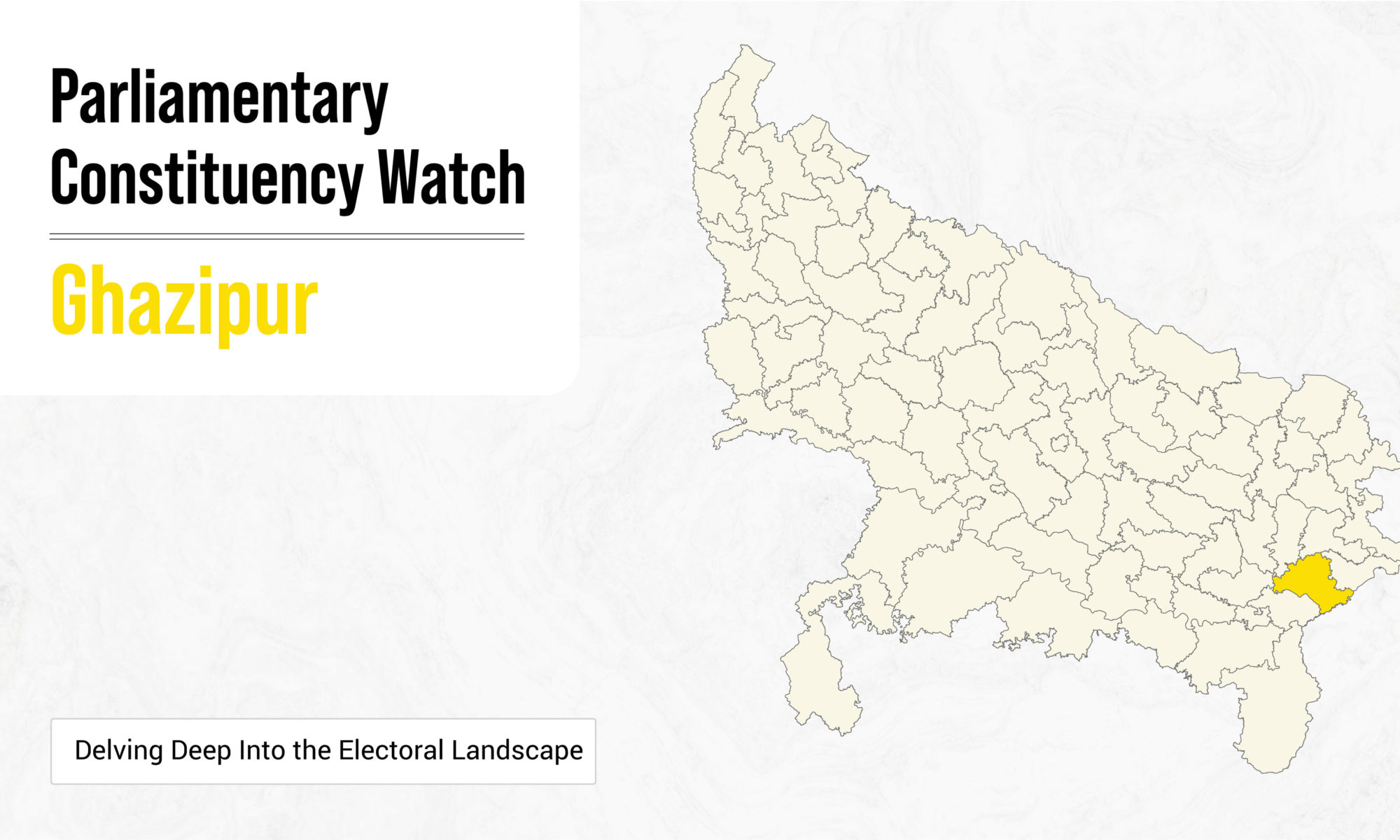Location
Ghazipur Lok Sabha constituency is one of the 80 Lok Sabha constituencies in the Indian state of Uttar Pradesh. It comprises 5 assembly constituencies and a district.
Category
Designated as a General Constituency.
Voter Turnout
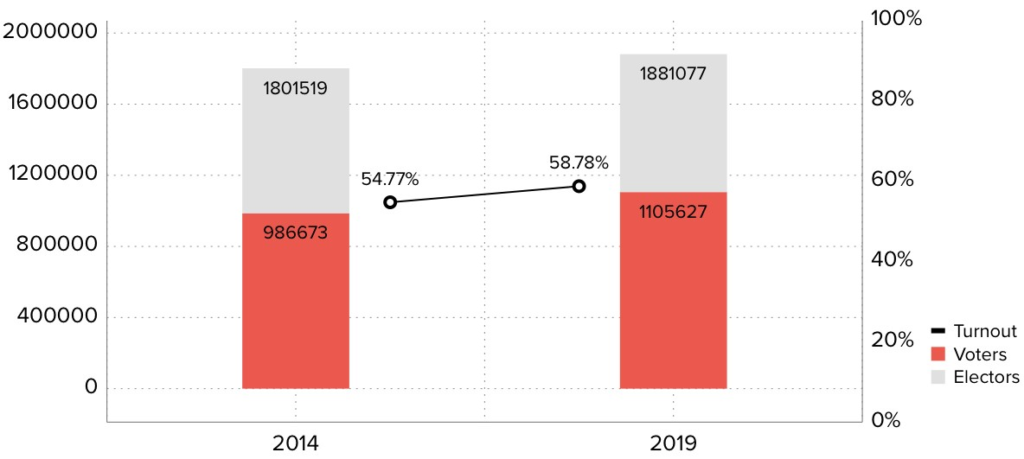
Ghazipur Electoral Turnout Rates
During the 2014 elections, the total number of electors was 18,01,519 and the turnout stood at 54.77%, in real numbers- 9,86,673 voters. 2019 witnessed a turnout increase; out of the 18,81,077 electors, 58.78% of voters exercised their constitutional rights. In real numbers- 11,05,627 voters.
Representation and Results
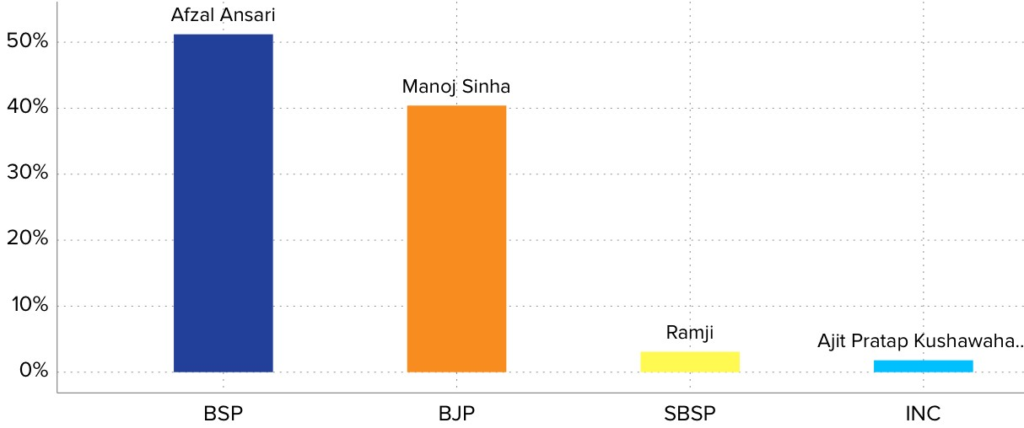
Party Wise Vote Share
2019’s parliamentary election winner, BSP’s Afzal Ansari gained a vote share of 51.20% and defeated BJP’s Manoj Sinha whose vote share stood at 40.40%. The other prominent candidates in the fray were SBSP’s Ramji with a vote share of 3.10% and INC’s Ajit Pratap Khushawaha with 1.80% of vote share.
Voting History –2014 & 2019
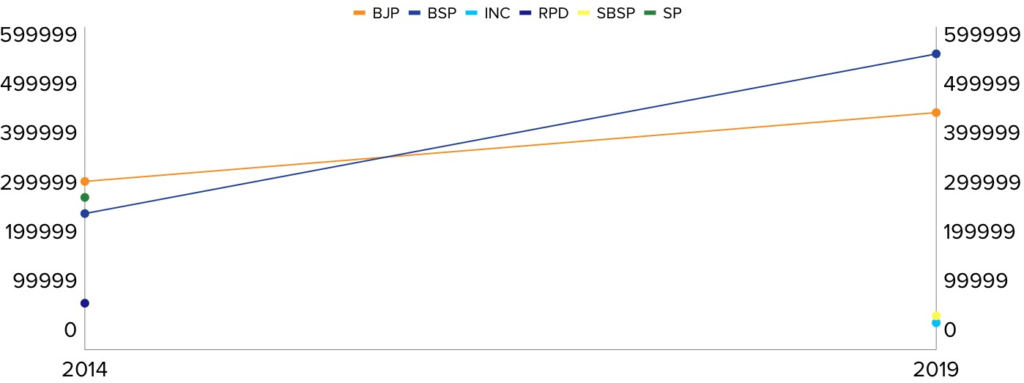
Party Wise Shift in Votes
In 2014, BJP won the constituency and earned 2,74,477 votes followed by 4,46,690 votes in the 2019 election victory. On the other hand, SP garnered 2,41,645 votes in 2014 and 5,66,082 votes in the 2019 elections.
Parties at helm through the years
Different parties have managed to win the Ghazipur constituency over the years.
The Indian National Congress (INC) established its dominance with successive wins in 1952, 1957, and 1962. However, a significant shift occurred in 1967 when the Communist Party of India (CPI) emerged victorious, marking a departure from the INC’s reign. This trend continued in 1971, with the CPI securing yet another victory. The political arena experienced a transformation in 1977 as the Janata Party (JP) swept to power. The INC made a resilient comeback in 1980 and 1984, underlining its enduring appeal.

Timeline of Winning Parties
An unexpected turn came in 1989 when independent candidates (IND) claimed victory, showcasing the diversity of Indian politics. The Communist Party of India (CPI) seized the limelight again in 1991, followed by the Bharatiya Janata Party’s (BJP) historic win in 1996, signifying the rise of a new political era. The Samajwadi Party (SP) showcased its influence in 1998, while the BJP secured victory once more in 1999. The SP continued to make its mark in 2004 and 2009, shaping the evolving political narrative. The Bharatiya Janata Party (BJP) reasserted its prominence in 2014 before Bahujan Samaj Party (BSP) managed to win in 2019, marking its first appearance at the center stage.
Party-wise success rate
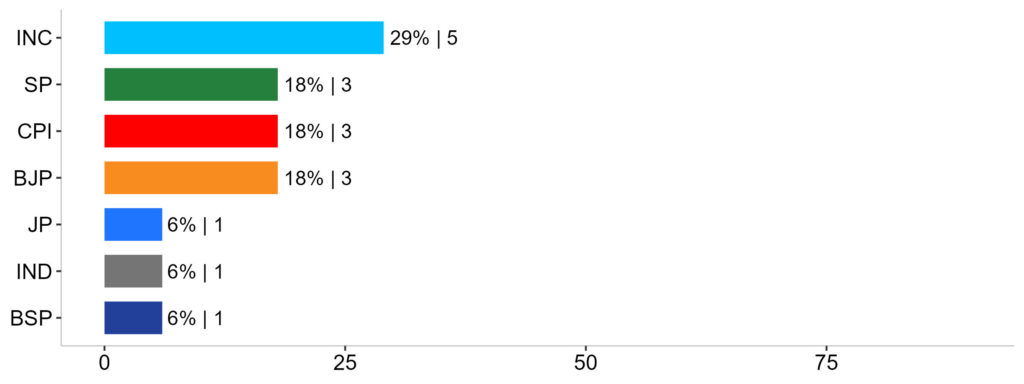
Success Rate
In terms of the success rate in securing the Ghazipur Lok Sabha seat, INC had exhibited the highest rate of success over the years, standing at 29%. Among other prominent parties, BJP, CPI and SP enjoyed a success rate of 18% each.
Gender Wise Distribution of Contestants
During the 2009 elections, there were 15 contestants and all of them were male. In 2014, the total number of contestants increased to 18, out of which 17 were male and 1 was female, in percentage- 94% and 6%.

Gender Wise Distribution of Candidates
In 2019, on the other hand, the total number of contestants decreased to 14 with participation being limited to males only.
Gender wise voter turnout
In 2009, out of a total of 18,01,519 electors, 9,86,673 voters cast their ballots. Of the 9,83,352 male electors, 5,29,153 participated in the election, constituting a turnout rate of 54%. There were 8,18,167 female electors and of that, 4,57,520 chose to vote with a turnout rate of 56%.
In 2014, there are 15,24,110 people who are eligible to vote and 7,70,232 of them chose to exercise their right to vote. Out of these, 8,14,630 were male electors and 7,09,480 were female electors. 51% of male electors (4,16,711) and 50% of female electors (3,53,521) cast their ballots.
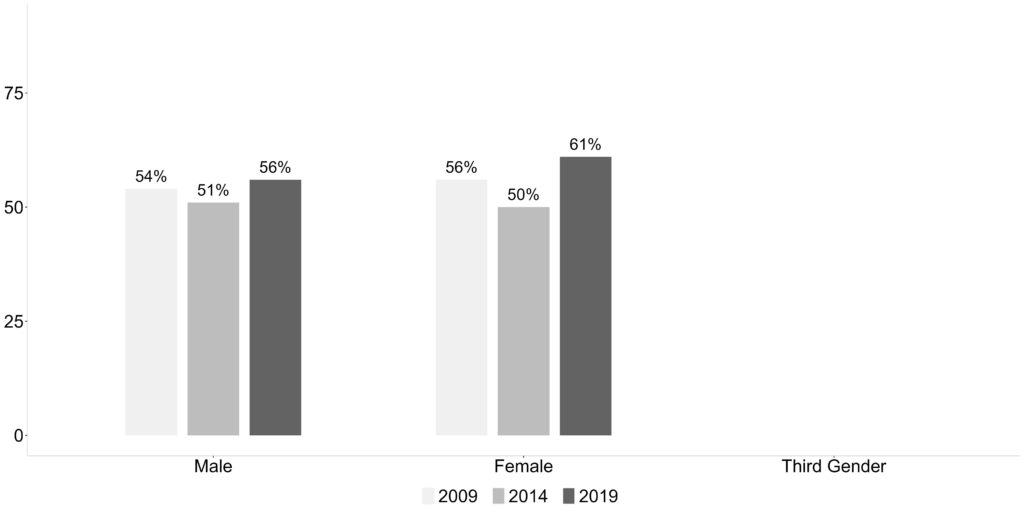
Gender Wise Voter Turnout
The total count of electors in 2019 was 18,81,018 out of which 10,99,890 chose to cast their ballot in the parliamentary elections. Out of 10,29,733 male electors, only 56% voted which is 5,80,248 male voters in real numbers. On the other hand, the voter turnout for females stood at 61% which translates to 5,19,642 voters out of a total of 8,51,285 female electors in real number.
In 2017, transgender people were included as a separate category of the third gender in electoral rolls. There were no electors belonging to the third gender category in the parliamentary constituency during the 2019 elections.
Gender-Wise Literacy Rate
We are taking a peek at the gender-wise literacy rate of the Ghazipur district which is a part of the Ghazipur parliamentary constituency as literacy is considered an essential indicator of the socioeconomic development of the region.

Gender Wise Literacy Rate
Ghazipur District
The 2011 census of India has pegged the overall literacy rate of the Ghazipur district at 61%. Gender-wise, the male literacy rate in the district is 70% whereas, for females, the literacy rate stands at 50%.
Stay updated on the electoral statistics for parliamentary constituencies and the changing dynamics on Meradesh App. Available on Appstore and Play Store.
Reach your constituents, gain insights into their motivations, and build campaigns based on data-driven strategies with the Meradesh Platform.
Data Source – Meradesh.org
